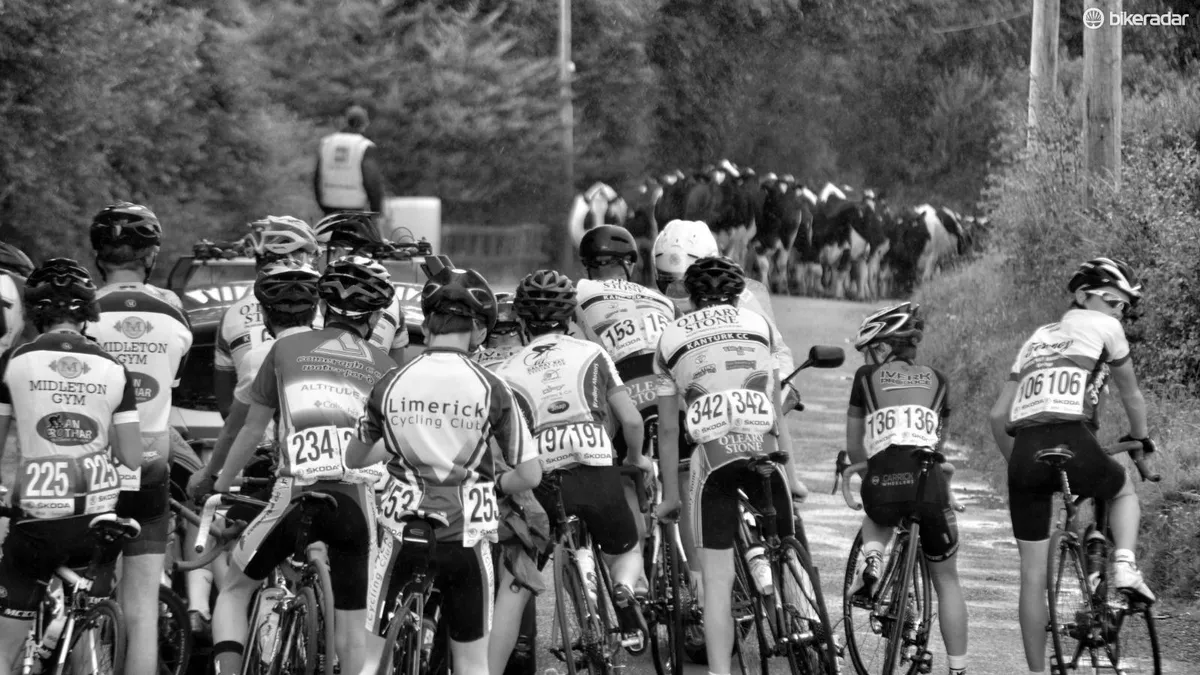This is a sponsored post in association with A1 Coaching.
In the first post of this series I spoke about the need to challenge conventional methods and to embrace new knowledge and techniques. This phenomenon of 'junk miles' is the main factor preventing athletes from maximising their available training time.
- Click here for free access to A1 Coaching’s winter training video series
- How to get more speed with less training
The main training-related problem with this average speed culture (made worse by Strava) is that riders ride around at a perceived effort of 7 out of 10 most the time. Therefore, whatever number of hours are available, they tend to ride as hard as they can for that time, trying to get the best average speed. In this way, they are not training the different physiological systems for optimum benefit.
Your physiological systems and training zones
If you’re a time-crunched cyclist you must learn that performance is a combination of your different physiological systems working in harmony. Each system is trained differently, and you have to adapt your training accordingly – this is ‘zonal training’.
Sounds complicated? It isn’t really. Zonal training is the concept that you work at different intensities – or zones – to train the respective physiological systems. You can learn how to do this in practice pretty quickly.
The physiological systems
In basic terms we have three key physiological systems, each of which should be stimulated by working in the appropriate zone.
Various terminology is used and I give some samples here without making it too complicated. Also, different scientists and coaches use variations of the system and different terminology, so this may lead to confusion. Essentially, it doesn’t matter which one you use as long as you understand it and stick to it:
1. Endurance / aerobic endurance / exercise economy (AE)
This is a basic building block of all endurance performance and refers to slow, steady exercise over long periods of time. It is the effort at which we ‘can ride all day’. Training for aerobic endurance is relatively easy – long, steady, slow miles. You may find it difficult to workout at this low level – it may feel ‘too easy’ and a waste of time!
2. Threshold / lactate threshold (LT) / functional threshold power (FTP)
Lactate ‘threshold’ refers to the maximum effort you can maintain over an extended period (usually measured over one hour). It is the point at which the body can no longer process accumulating lactate in the muscles and performance declines. The higher your ‘threshold’ the faster you can go over longer periods. It is, therefore, a major factor in endurance performance. Training to improve lactate threshold is relatively hard.
3. VO2 max / maximal aerobic capacity
VO2 max measures how much oxygen the body uses at a maximum effort for a number of minutes. In cycling, VO2 max efforts generally mean all-out, gut-bursting efforts of between a few seconds and a few minutes. This is real ‘high intensity training’ and is ‘anaerobic’ – it cannot be sustained for long as oxygen supply can’t keep up. This type of training really hurts!

The training zones
Here I will give you a basic explanation of the training zones based on ‘rate of perceived exertion’ (RPE). In other words, how each one feels. (In the next article I will provide more detail on how to set these zones accurately based on your current fitness levels, and the following one will describe how this translates into a typical training week of smart training on reduced time.)
- Zone 1: ‘recovery pace’ – this feels very easy and you might find it difficult to go this slow as you’ll think you are wasting your time
- Zone 2: steady endurance – a pace you would ride steady at for two to six hours without putting yourself under pressure; conversation is easy (‘tempo’)
- Zone 3: moderately hard but sustainable; limited conversation (‘tempo’)
- Zone 4a: sometimes described as the ‘sweet spot’ – quite difficult, conversation in short sentences only
- Zone 4: time-trial pace – the maximum output you can hold for around 30 minutes or more. It hurts; conversation is definitely out
- Zone 5: short, all-out efforts from 10 seconds to five minutes; it hurts a lot
- Zone 6: extremely short, maximal efforts of a few seconds (not relevant to most cyclists)
From these you will see that zones aren’t that complicated – you have experienced most of them and know how they feel. You’ll also begin to see a relationship with the three physiological systems I’ve summarised – the training zones are obviously more relevant to different systems.
However, remember that key, number one mistake I started this article with – that emphasis on average speed and junk miles?
It is a mistake, for example, to think that riding ‘tempo’ in Zones 2 and 3 all the time is the best method of training for endurance events if your training time is limited. For example, training your zone 5, Vo2 Max system regularly for a few minutes can have a big impact on your ability to ride faster over a number of hours.
Smart training – setting and using the zones for optimum performance
If you have 20-plus hours per week to train you can ride around without a plan and sooner or later you’ll probably stumble on something that works.
However, those of us with busy lives need to start questioning the old-school methods.
Over the next four articles of this series I will continue to bring you along this journey of learning and progression. In the next post I’ll go into ‘the numbers’ – how to test a key, measurable performance indicator unique to you, and how to set your training zones from this. This is the next key step towards ‘smart training’ – making the most of your precious time and eliminating the junk miles.
